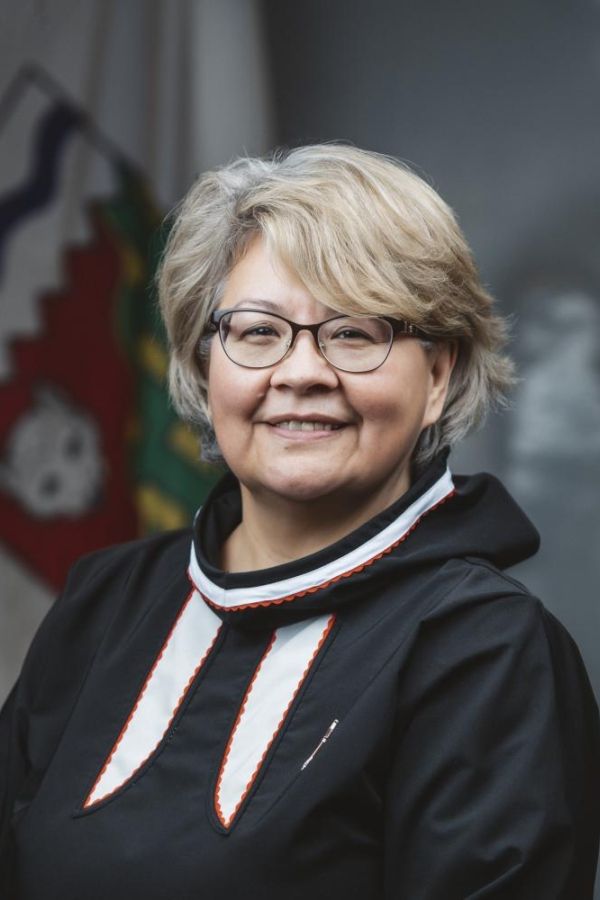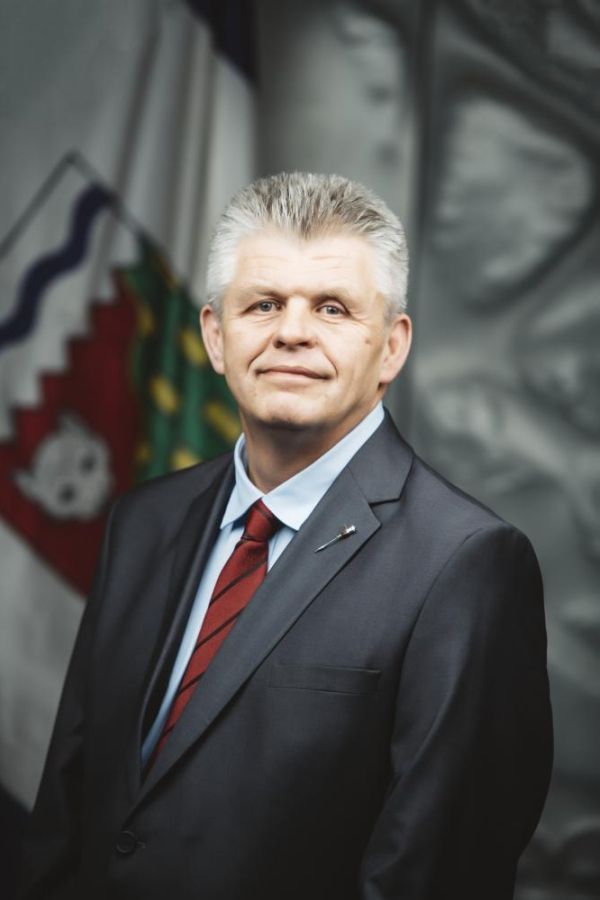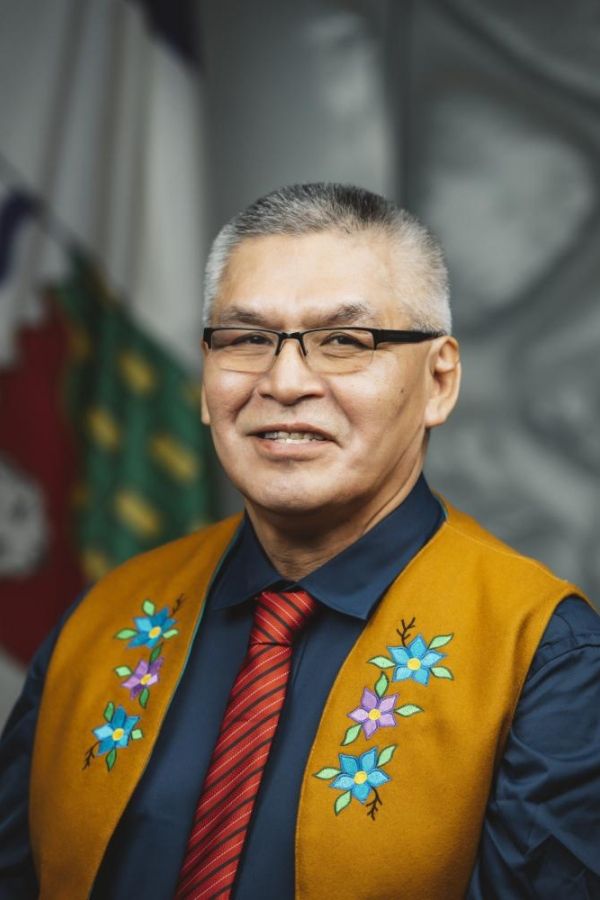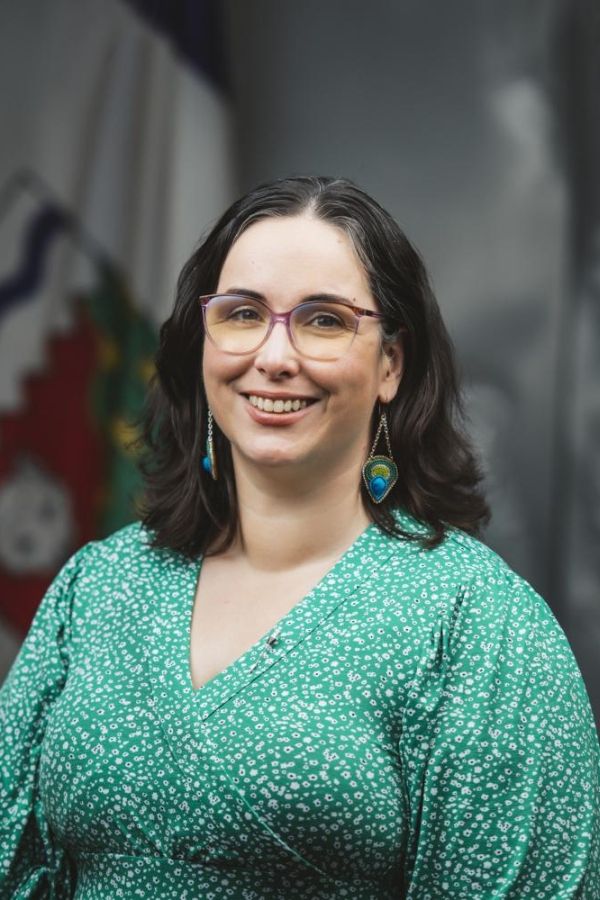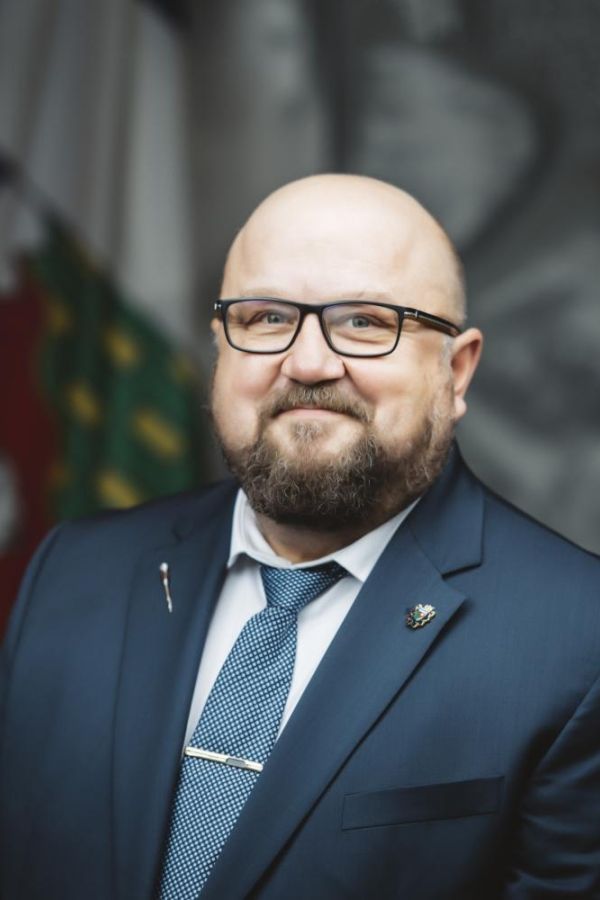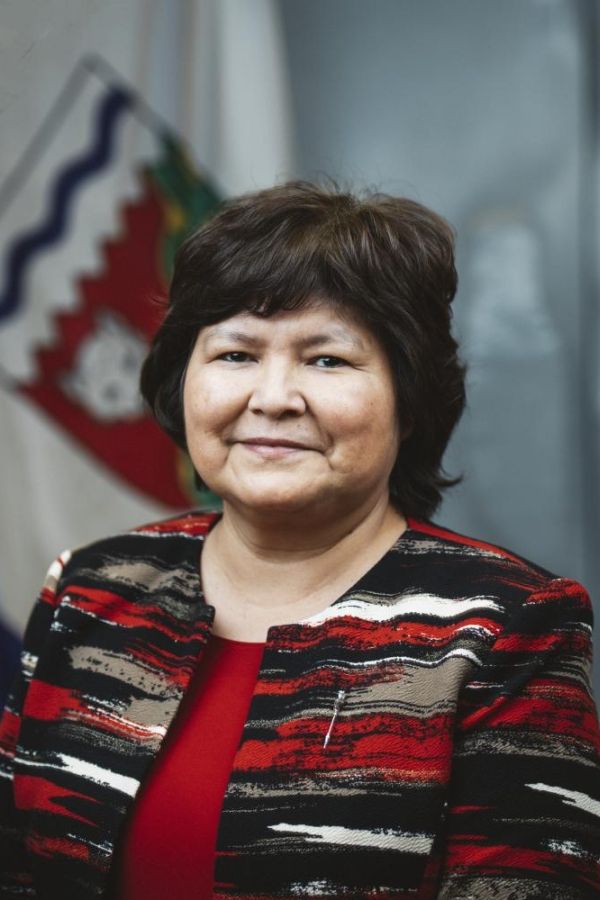
Thank you very much, Mr. Chair. So, Mr. Chair, that was part of our fiscal sustainability reduction and our ask that Prosper NWT look at different options as to how to create more sustainability within the organization with less investment from the GNWT. And so I am working with Prosper NWT, with their board as well, to figure out what the future looks like and how they can continue to provide great service to businesses across the territory. Thank you.
Thank you. I'll go to the Member from Yellowknife North.
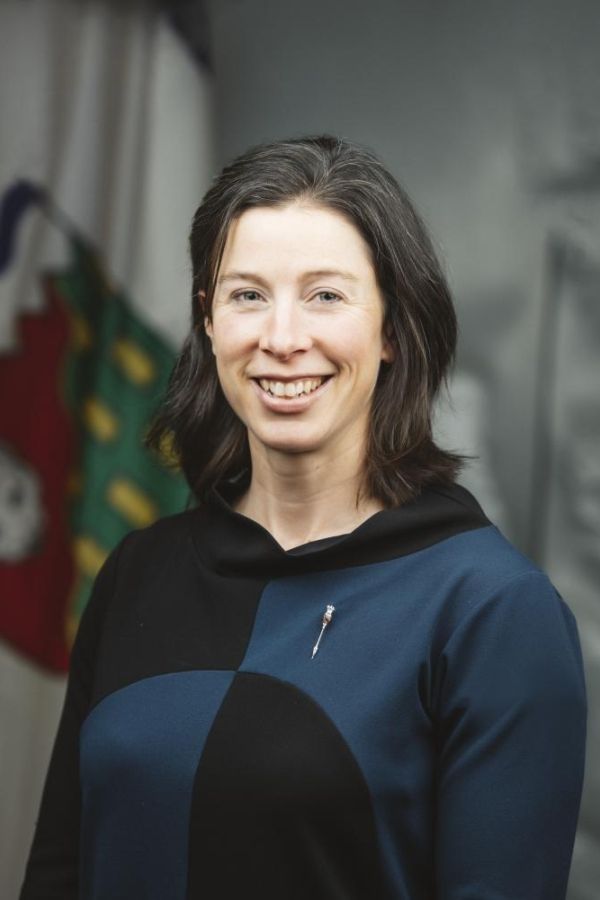
Okay, thank you for that. That's good to know. My next question is about the dramatic increase in economic diversification overall funding, and it looks like it's related to contract services. Can the Minister explain what in particular can be attributed to -- well, actually, it was an increase in last year's revised estimates that continued on to this year's main estimates. Thank you, Mr. Chair.
Thank you. I'll go to the Minister.

Thank you very much, Mr. Chair. Mr. Chair, the primary driver of that is the Hay River fish plant. Thank you.
Thank you. I'll go to the Member from Yellowknife North.

Okay. And that is -- certainly, I think, fisheries are an important industry that we don't want to lose sight of. But probably a whole other conversation in and of itself that I won't get into now.
My next question, so the SEED program -- well, the first question -- I know that there's going to be an incorporation of arts funding all into ITI. Is the arts funding that used to be done through ECE all to come out of SEED funding, or is it coming out of somewhere else in this line? Thank you, Mr. Chair.
Thank you. I'll go to the Minister.

Thank you very much, Mr. Chair. So, Mr. Chair, the arts funding from ECE is still seen in the main estimates under ECE for this year. So currently what's happening is the planning of how to do that amalgamation. So you won't see any of those dollars that used to be in ECE in ITI. They are still located in the Education, Culture and Employment main estimates at this time. Thank you.
Thank you. I'll go to the Member from Yellowknife North.

Okay, thank you for that. That is -- that's a relief. I was especially concerned seeing SEED funding go down quite a bit, wondering if we're piling more and more things under that umbrella, how we're going to sustain all these initiatives. But that's good to know.
My last question, in response to a previous question, the deputy minister talked about microclusters in agriculture and manufacturing. And I've seen that term a few times also in the business plans around -- I think it's microclusters of housing. I'm not familiar with this term microclusters, and I wonder if you could explain when you say you're looking at microclusters, what does that mean?
Thank you. I'll go to the Minister.

Thank you very much, Mr. Chair. So, Mr. Chair, microclusters are these basically, like, individual business entities that kind of grow and generate themselves within different communities. So, for example, you know, if I travelled to community X, Y, Z, and they're saying, you know, we're really interested in getting agriculture going, we really see the potential, and that starts to generate and you end up with this microcluster of an agriculture industry within that one community that grows and supports itself and evolves from there, and Hay River is a great example of that where, you know, you've got a lot on the go in this community, everything from eggs to wheat to berry trees and all the rest of it. So there's a lot of really neat things going on. And so they're essentially economic hubs that occur in our communities. And I think one of the things that's really important about those is they end up being resident driven, which is what you need, really, in order to have a successful business; you need that heart and hustle. And so if the residents are driving that economic hub or that economic microcluster, the chances of it succeeding are way, way greater than if, you know, somebody else is deciding for a community what their industry is going to be. I think it's really important that where people want to put their time and their energy and their sweat and -- their blood, sweat, and tears, so to say, it need to be personally driven by community members for it to succeed. Thank you, Mr. Chair.
Thank you. I'll go back to Yellowknife North, the Member.

Thank you for that. So I'm still not clear what ITI or the GNWT's role in that is, but that could be a further conversation. But my final question, so one of the specific actions that ITI has in its business plan to support housing is connecting economic analysis of the housing sector to determine whether an industry led microcluster could be fostered for the NWT Housing sector I suppose as a whole. Can you explain what exactly that would involve? I don't really understand what that action is at all. Thank you, Mr. Chair.
Thank you for your final question. To the Minister.

Thank you very much, Mr. Chair. So, Mr. Chair, one of the things that I have learned very quickly about ITI is ITI is very much a connector department, and so it plays a very strong role with connecting other departments within the GNWT, connecting, you know, grassroots, organic funding like the SEED program, to other funding mechanisms through CanNor and such, by connecting smaller grassroots programming -- or funding programs, like manufacturing funding, SEED funding, you know, even if it's an agriculture microcluster, for example, you've got the SCAP funding. But when it comes to housing, if you have a community who really wants to play a vital role -- and I mean, there are communities represented here who have approached me about doing, for example, trades programming in order -- in their home community in order to facilitate building housing, and so now all of a sudden, you've got ITI that is acting as a connector between multiple departments, between multiple funding entities, whether it's through federal government or even just the GNWT and then private sector that are bringing those together and creating essentially a housing hub or a housing microcluster in communities. And so whether or not that is for a specific part of housing or if it is seeing a housing project just for that community from start to finish, there's great opportunities for ITI to continue to play that role and to really play the connector piece on how do we start that's industries and really see them flourish by bringing all those funding pieces together.
Thank you. Okay, we're going to -- is there any further questions? No, don't see no hands. Okay, no further questions. Please turn to page 235.
Industry, Tourism and Investment, economic diversification and business support, operations expenditure summary, 2024-2025 Main Estimates, $20,897,000. Does the committee agree?
Agreed.
Thank you. We will take a short 30-minute break now, and we'll come back. So that will give a chance to give the translators an opportunity to rest. Thank you.
---SHORT RECESS
Okay, thank you. Moving on to minerals and petroleum resources beginning on page 239 with information items on page 234. Are there any questions? I'm going to go to the Member from Frame Lake.

Thank you, Mr. Chair. I'm being blinded by, like, a beam of miraculous light here.
My question on this one, I believe that this division -- well, I guess the first question just to make sure I'm getting -- I'm in the right spot here, but this division deals with remediation employment opportunities and mining employment opportunities in the NWT, is that correct?
Thank you. I'll go to the Minister.

Sorry, Mr. Chair. Can the Member be more specific about what he's looking for. At ITI, we don't do mine training, per se, you know, as ECE might, and don't have mining positions, but this is the section that houses our Pathfinders if that's what the Member is looking for.
Thank you. I'm going to go to the Member from Frame Lake for clarification. Thank you.

Yeah, thank you. No, I'm not really speaking to the pathfinder program. And maybe I'll give a little bit more detail so the Minister can understand what I'm getting at. So there's been quite a bit of talk in the past little while about the opportunities that mine remediation has for employment in the territory and just ensuring that we are capturing the benefits from this activity, but namely, the Giant Mine remediation project was going to be -- you know, it's upwards of $4 million now that's going to be spent in the territory. And my question is if this is the department to be asking questions about those opportunities and who is overseeing them?
Thank you. I'll go to the Minister.

Thank you very much, Mr. Chair. Yes, ITI is a partner in that, and the lead on that is ECC from the GNWT's perspective. Thank you.
Thank you. I'll go to the Member from Frame Lake.

Okay, thank you. So this is news to me, I didn't realize this. So ECE is involved in dealing with the employment opportunities for mine remediation for Northerners?
Thank you. I'll go to the Minister.

Thank you very much, Mr. Chair. So, Mr. Chair, yes, ECE is the lead on the Giant Mine remediation project partnership with the federal government. Thank you.
I'm going to go back to the Member from Frame Lake.

Okay, thank you. That's interesting, it kind of counters my understanding. I was under the impression that with relation to employment opportunities, ITI was playing a role. I understand there's some kind of coordination committee related to it that ITI is partnering in. So I wanted to ask about that, how it's going, how the department sees itself in that role with relation to the fact that, you know, this department also has a division that's managing economic diversification and maximizing opportunities there. So I was hoping to ask questions about that. So maybe the department can clarify a little bit, like the role that they are playing in this system, particularly related to capturing the economic benefits from this activity.
Thank you. I'll go to the Minister.

Thank you very much, Mr. Chair. Mr. Chair, yes, ITI/ECE does play a role along with ECC. ECC is the role. And for kind of the operational way that that looks within ITI, I would like to pass it to the deputy minister. Thank you.
Thank you. I'll go to the deputy minister.
Thank you, Mr. Chair. So further to what the Minister spoke about, every kind of project we put together, the partners that need to be on it, so specifically on Giant Mine, although it is an ECC lead, ITI and ECE participate on the socio-economic advisory board, but it's multi-stakeholder. So it has IGs, Canada, GNWT departments, and the city of Yellowknife. Other projects, like the remediation economy for example, there's a project that has federal SPIDE funding, and that one is led by CIRNAC. They're working with the college and ECE on, you know, doing training, specifically for example, for the Deline Great Bear Lake opportunity and Norman Wells. And then we have our socio-economic agreements where, yes, we track employment and we work with ECE and HSS on those. So all a it different but, yeah, you're right, we have our hands on, you know, ensuring that the resource projects, you know, do hire locally and we do the best to coordinate how we achieve that. Thank you, Mr. Chair.
Thank you. I'm going to go to the Member from Frame Lake.

Thank you, Mr. Chair. So we are starting to get to the bottom of it here. And I appreciate that, that clarifying information. So now speaking to the particularly the socio-economic and the program that the deputy minister just mentioned, can she kind of describe what the department is doing to maximize benefits to Northerners from that project in particular and remediation in general.
Thank you. I'll go to the Minister.

Thank you, Mr. Chair. Mr. Chair, I will pass it to the deputy minister to provide detailed information about that.
Thank you. I'll go to the deputy minister.
Thank you, Mr. Chair. I just want to make sure that I understood quickly if I haven't covered that the Member would like, please let us know. But with respect to the Giant Mine remediation project, ITI did complete a procurement review of what monies were spent in northern and Indigenous NWT businesses contracted by parsons. We found that there was strong overall performance with about 65 percent of those dollars going to NWT Indigenous and NWT businesses. And that number's ranged from 56 to 76 percent overall. And largely, the dollars that are going south are southern contracts that aren't available in the North. The work we do is working with companies to right size those contracts. For example, we met with Diavik on Friday last and talked about their closure, and it's a big contract, and how can they right size and break those contracts down to make northern firms able to bid on them. And that's the work they're doing right now. We know, for example, De Beers at Gahcho Kue has been very successful at breaking down the contracts. So I hope that answered the Member's statement. Thank you, Mr. Chair.
Thank you. I'll go to the Member from Frame Lake.

Thank you. And, yeah, I think this is one that I want to kind of maybe follow up with the department a bit more sort of outside of the budget deliberations. I just wanted to get some questions on the floor about it. But I am interested in learning more about what the department's doing, how it's capturing the benefits. This one's important to me. But I'll leave my questions on this budget item as that for now. Thank you.
Thank you. I'm going to go to the Member for Range Lake.

Thank you, Mr. Chair. I would like to ask about the mining incentive program. What was the subscription rate for the program last fiscal year? Thank you.
Thank you. I'll go to the Minister.

Thank you very much, Mr. Chair. Mr. Chair, the subscription rate for the program, we have a budget of $1.5 million, and in 2022-2023 our actuals were $1.274 million. So while each year the program is fully subscribed, what ends up happening is there are monies that companies are not able to spend. Sometimes it can be due to, for example, wildfires. And they end up having to hand that money back to ITI. Thank you.
Thank you. I'll go to the Member from Range Lake.




